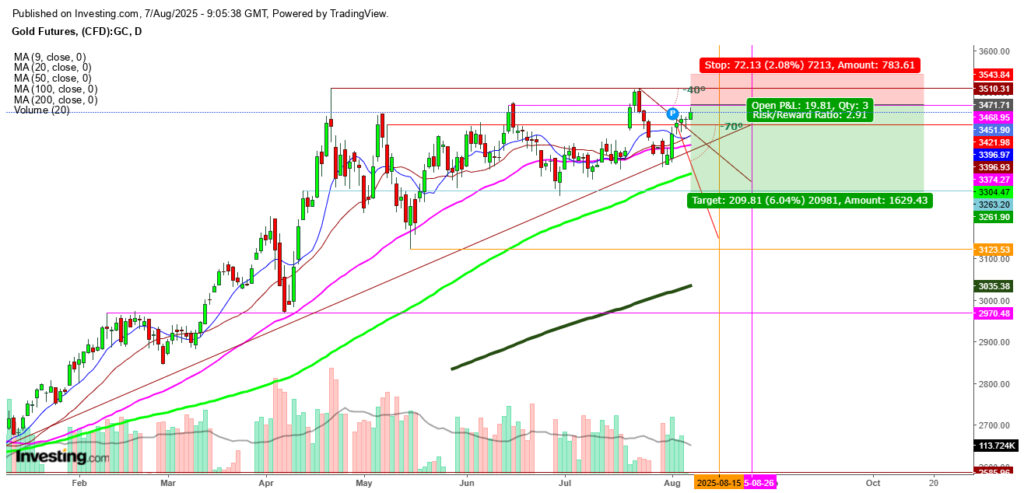In the continuously fluctuating economic landscape, shaped significantly by political decisions, the allure and stability of gold as an investment option have once again come under scrutiny. This analysis delves into the recent dynamics of gold futures, specifically against the backdrop of shifting policies on tariffs by the U.S. administration under President Donald Trump, which have the potential to shake the very foundations of the global economy.
Gold, traditionally seen as a haven during times of economic uncertainty, experienced a notable surge in interest. This spike was temporary, as evidenced by the movement of gold futures in the daily chart, which suggests a re-entry into a bearish zone. This shift indicates that the initial rush among investors, buoyed by the possibility of reaching the peak price seen on July 23, 2025, may have been a fleeting episode of overenthusiasm.
On a particular Thursday, gold futures witnessed a 1% gain, casting doubt on the endurance of this bullish trend. This uptick had propelled the futures into bear territory, leading market strategists to speculate about the inauguration of a fresh spree of short selling, with a stop loss set at $3543 and a target at $3262. Such strategic movements were in reaction to fresh tariff threats levied by President Trump and were further compounded by weaker U.S. economic indicators pointing towards potential rate cuts.
A significant policy announcement from Trump regarding the imposition of a 100% tariff on imported semiconductors from certain countries unless there’s an investment in American chip manufacturing has escalated anxieties over potential disruptions to global supply chains and a spike in inflation. These developments exerted additional bearish pressure on the U.S. dollar, underscoring the interconnectedness of global trade and currency markets.
Despite these bullish bumps, the gold futures faced resistance, evidenced by a decline from the day’s high of $3662 to $3654, showcasing the market’s hesitancy to embrace a continued upward trajectory. This reluctance among investors can be attributed to the diminishing appeal of gold as a safe-haven asset at elevated price points, especially considering its status as a non-yielding asset. The attractiveness of holding gold is further challenged by the Fed’s monetary policy direction.
Turning our attention to the U.S. Dollar Index Futures, they were observed attempting to maintain a critical support level. The future movements of the U.S. dollar will likely be influenced by President Trump’s stance on tariffs. Historically, a hardline approach to tariffs has triggered reciprocal actions from trade partners, potentially leading to shifts towards de-dollarization. Such measures have included the adoption of local currencies for trade to circumvent the repercussions of heightened U.S. tariffs.
Countries like Saudi Arabia, China, and several Middle Eastern nations have begun to explore alternatives to the U.S. dollar. Notably, China’s introduction of the petroyuan for oil transactions with Saudi Arabia and its utilization for gold purchases indicates a strategic pivot away from the petrodollar. If the U.S. persists with aggressive tariff policies, this trend towards de-dollarization may gain further momentum, encompassing a broader spectrum of nations, including key players like India.
The overarching implications of these tariff-induced shifts on the U.S. economy and the global economic landscape cannot be understated. The potential for a renewed sell-off in gold futures looms large, underscoring the pivotal role of trade policies in shaping commodity markets and investment strategies.
In conclusion, while the allure of gold as a secure investment amid economic turbulence remains, the asset’s trajectory is profoundly influenced by geopolitical manoeuvres and policy decisions. Investors and market watchers would do well to navigate these turbulent waters with caution, acknowledging the inherent risks and the potential for sudden shifts in market sentiment.
Disclaimer: This analysis is intended for information and educational purposes only. Individuals considering investment in gold or any other assets should do so cautiously and with due diligence, mindful of the risks involved and the unpredictable nature of financial markets.



